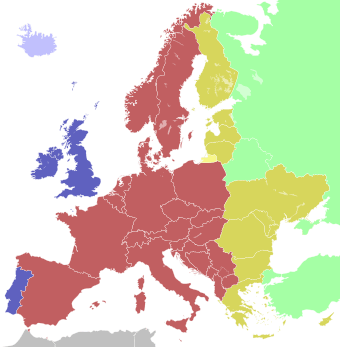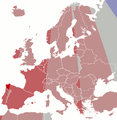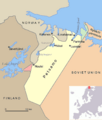Central European Time facts for kids

| blue | Western European Time (UTC+0) Western European Summer Time (UTC+1) |
| light blue | Western European Time (UTC+0) |
| red | Central European Time (UTC+1) Central European Summer Time (UTC+2) |
| yellow | Eastern European Time (UTC+2) Eastern European Summer Time (UTC+3) |
| orange | Kaliningrad Time (UTC+3) |
| green | Further-eastern European Time (UTC+3), a.k.a. Moscow Time |
Central European Time (often called CET) is a special way of telling time used in many countries. Think of it like a big clock that many places in the middle part of Europe and some parts of Africa all follow.
CET is one hour ahead of Coordinated Universal Time (UTC). UTC is the main time standard for the whole world, like a master clock. Before, people often called UTC by another name: Greenwich Mean Time (GMT).
Not all European countries use CET. For example, Ireland, Great Britain, Iceland, and Portugal use a different time zone called Western European Time (WET). But most other countries in central Europe, from Norway down to Poland, Slovakia, Hungary, Bosnia and Herzegovina, Serbia, and North Macedonia, all use Central European Time.
In Africa, the countries of Algeria and Tunisia also use CET. However, they do not change their clocks for daylight saving time. This means they stay on CET all year round, while many European countries move their clocks forward in spring and back in autumn.
Contents
Understanding Central European Time
Central European Time is one of the main time zones in Europe. It is set up so that when it's noon in the United Kingdom (which uses UTC/GMT), it's already 1 PM in countries that use CET. This helps people know what time it is across different countries.
Where is CET Used?
Many countries in Europe use CET. This makes it easier for people to travel and do business between them. Imagine trying to schedule a video call with friends in different countries if everyone had their own unique time! Time zones help keep things organized.
- European Countries using CET:
- Albania
- Andorra
- Austria
- Belgium
- Bosnia and Herzegovina
- Croatia
- Czech Republic
- Denmark
- France
- Germany
- Gibraltar
- Hungary
- Italy
- Kosovo
- Liechtenstein
- Luxembourg
- Malta
- Monaco
- Montenegro
- Netherlands
- North Macedonia
- Norway
- Poland
- San Marino
- Serbia
- Slovakia
- Slovenia
- Spain (except Canary Islands)
- Sweden
- Switzerland
- Vatican City
- African Countries using CET:
- Algeria
- Tunisia
CET and Daylight Saving Time
Many countries that use Central European Time also use something called daylight saving time. This means they move their clocks forward by one hour in the spring. This makes evenings brighter for longer. Then, in the autumn, they move their clocks back one hour. When they do this, CET becomes Central European Summer Time (CEST), which is UTC+2.
However, as mentioned, Algeria and Tunisia do not use daylight saving time. They stay on CET (UTC+1) all year.
Images for kids
-
The monument 'The 15th Meridian' in Stargard, Poland. This meridian is important for time zones.
See also
 In Spanish: Hora central europea para niños
In Spanish: Hora central europea para niños





